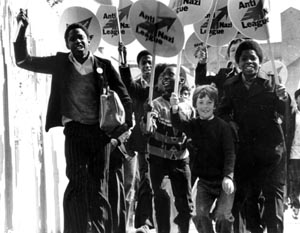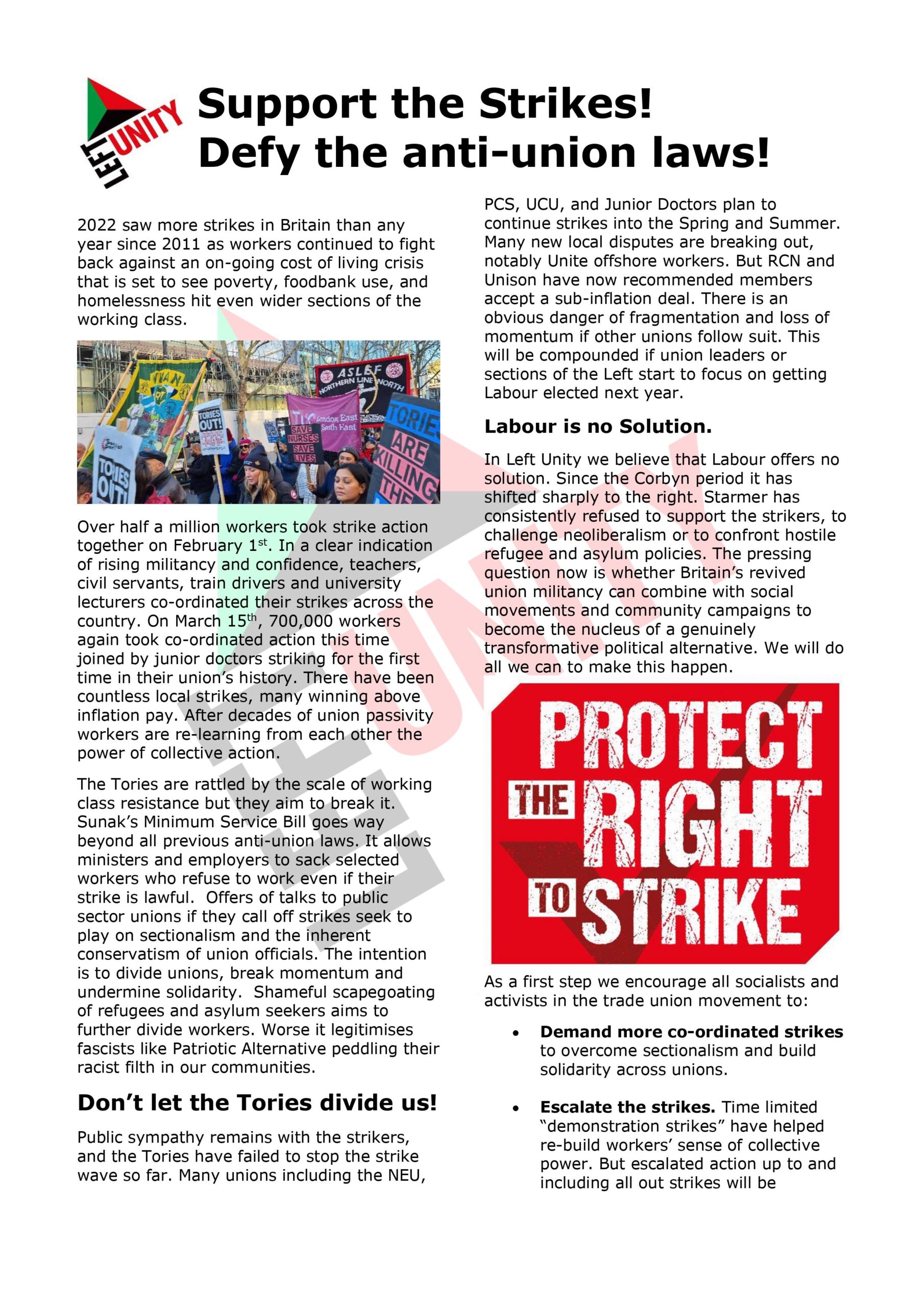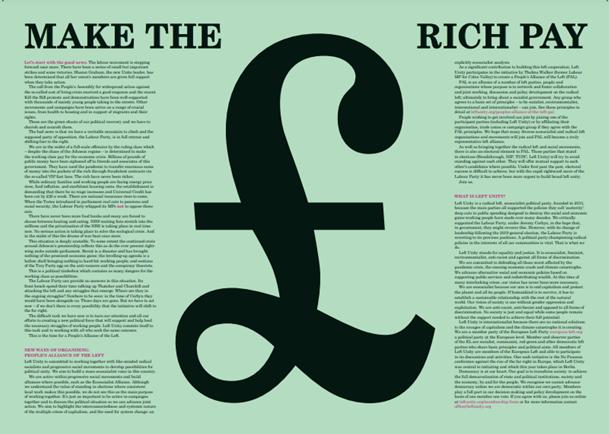Turning points – or the closing of windows of opportunity?
 Mark Perryman argues that after the SWP car crash we need to review why the Outside Left’s turning points have invariably turned instead into the closing down of windows of opportunity
Mark Perryman argues that after the SWP car crash we need to review why the Outside Left’s turning points have invariably turned instead into the closing down of windows of opportunity
Evan Smith raises the question on his blog whether the SWP fallout will prove to be a turning point for the British Far Left. Before any kind of assessment of that possibility it might be useful to track back via some other previous potential turning points, or what from the outset I would more modestly term ‘ windows of opportunity.’
One might be the decision in 1991 of the CPGB to dissolve itself. Even at the end this remained the biggest organisation of the Outside Left, this surely opened up the space for something to replace it. Yet despite the best efforts of the CPB to perpetuate the British Communist tradition, it remains today considerably smaller than the CPGB at its dissolution, around 2500 members compared to the CPB’s not much more than 1,000, and far smaller than the CPGB a decade prior to the end when it could still boast well over 10,000 members and a well-staffed and resourced party infrastructure. In an entirely different way the SWP sought to replace the CPGB as the dominant organisation to the left of Labour. It has grown intermittently yet the evidence of the recent fallout suggests a membership also smaller than the CPGB at the end. Perhaps the biggest testament though to the SWP mini-me CP aspirations was the Stop the War Coalition of 2001-2003, a hugely successful campaign in terms of mass mobilisation, initiated and staffed by the SWP, and while they would never describe it as such, a truly Popular Front. Yet StWC’s success is also testament to the SWP’s failure – despite the role it played in the campaign no sustainable growth of the SWP itself and since StWC no other initiatives it has taken have come anywhere close in terms of size or influence .
Another, the 1994 break with Labour by Arthur Scargill to form the Socialist Labour Party. Ten years after the miners’ strike Arthur wasn’t yet damaged goods. He was able to locate the SLP in amongst a generation shaped by the strike and disaffected by Labour’s forward march to the right. It is difficult now, 17 years on, to assess what kind of social weight Arthur would have had in the mining communities of his native Yorkshire but surely a campaign focussed on winning council seats, standing ex-miner experienced campaigners could have resulted in sweeping regional gains and created the basis for something bigger. But the long haul of local politics didn’t appeal and the quick-fix of building a national party from scratch around one individual was pursued instead and to eventual ignominy.
The SSP breakthrough to win an extraordinary six MSPs in 2003 was a window of opportunity not just for the Scottish Left but the entire British Left too. Made possible not only by the careful building of a politics beyond their figurehead Tommy Sheridan but also the PR system used to for elections to the Scottish Parliament. Yet this was short-lived, the implosion, whatever the various rights and wrongs, destroying almost all the gains made. A similar story of Respect, with the two incredible election victories of George Galloway. First Bethnal Green and Bow in 2005 and then again, against all the odds in Bradford West 2011. Neither however turned into anything like the generalised breakthrough, or anything resembling it, that many believed at the time could follow. In 2005 surely the reason for this was that after Labour expelled George from the party not a single one of Labour’s anti-war MPs followed him out of the party, nor many councillors or members either. And in 2011 all the joy and hope of the ‘Bradford Spring’ was sacrificed via a series of fallouts arising from George’s choice of words to describe the bedroom etiquette of Julian Assange. The rights and wrongs of George Galloway’s, Tommy Sheridan’s and Arthur Scargill’s behaviour is less of the concern here, they have been covered extensively elsewhere. Nor am I necessarily suggesting a pattern. But it is surely uncontroversial to state that neither the SLP, SSP nor Respect have fulfilled anything like their expectations. And it is legitimate to point out that all three were in many ways moulded round the personality of their ‘star’ leader at the expense of much else that resembled a party identity.
And so the SWP. What kind of turning point does the fallout represent?
Firstly, the SWP is an organisation that lost in a catastrophically short period of time those who had been central to its formation and evolution. Whatever their strengths and weaknesses to lose Tony Cliff, Duncan Hallas, Paul Foot and Chris Harman within a few years of each other meant the regeneration of the entire party leadership and ideological guides in short order. In this, the evidence today shows, they’ve failed, spectacularly.
Secondly, the SWP is an organisation used to being fairly homogeneous yet has suffered a whole series of increasingly bigger splits in the past four or five years. The Respect fallout of 2007 meant they cast off their major project of the previous 4 years along with a decent chunk of activists and leading members. A short while later those responsible for leading the SWP in this period into Respect , then out of it to set up a new electoral vehicle, found themselves forced into a minority in their own party and eventually out of it. ‘Twists and turns’ doesn’t do this exercise justice! The consequence was a second damaging split , this time taking out two of the SWP’s most prominent members, Lindsey German and John Rees along with a further layer of activists, an entirely different bunch to those who left the SWP to stick with Respect.
The outcome of both has been that the SWP no longer has influence inside Respect and next to no relationship with Respect’s still very prominent MP, George Galloway. In fact since the Assange broadcast they have taken an overtly hostile attitude towards him. In terms of Counterfire , the SWP now has to cope with a group offering a not entirely dissimilar political mix. This it can probably endure but what is more damaging is the loss of almost any SWP influence in Stop the War, and even more seriously Counterfire’s ability to launch new campaigns with considerable trade union and broader support that the SWP either are marginal to or actively choose not to involve themselves in, because of Counterfire’s involvement. Namely the Coalition of Resistance and the People’s Assembly Against Austerity. Counterfire has also imaginatively and successfully launched the Emily Wilding Davison Memorial Campaign. Once again the SWP seems to have chosen to absent itself, though it is entirely possible Counterfire wouldn’t have welcomed their involvement with open arms either. Whatever the background, an activist-based SWP finds itself inactive on an increasing number of initiatives because of reasons of its own choosing, never mind the worth of the campaign. And in Scotland Chris Bambery’s Counterfire-aligned International Socialist Group were behind the successful launch of the Radical Independence Conference with the SWP left looking on from the sidelines. Apart from those originating from Counterfire there are other initiatives too that, knowing it cannot control, the SWP treats with hostility, such as Owen Jones’ call for a co-operative left and a similar call from former member, Mark Steel , or just ignores hoping presumably they might go away, such as the increasingly impressive efforts of the Left Unity group. Maybe neither the People’s Assembly nor Left Unity or the rest will come to anything, but if they any of them do the SWP will be left dangerously exposed as too busy looking after its own interest to be bothered.
Finally, the launch of the international socialist network represents the third split from the SWP in the space of a little over 5 years. Each one taking members out in different directions for differing reasons. This must be at the very least disorientating if not demoralising for those who remain. The problem the new network faces is the same as for Counterfire, being hamstrung by the perhaps natural inclination to defend the tradition from whence they came this acts as a barrier to connect to anything new. There is a strictly limited audience for an SWP-in-exile and given the financial and organisational resources the original version retain, the real thing will always win this particular battle.
What is more potent about the latest split is that it is characterised by a generational break. The students have so far been central and if they jump with those leaving this will give it numbers and organisation on campus where the SWP have traditionally been amongst the most impressive recruiters. The two most prominent figures, Richard Seymour and China Mieville are not tainted by any time at all in SWP leadership positions – this must be an advantage too. The dissent of the opposition is founded on a critique of how the SWP, and a wider Leninist left operates, this gives them the potential if they grasp it to connect to a wider audience alienated by the practices of the organised Left. And lastly because of the particular nature of this fallout the issue of political practice, they might not use the word, the prefigurative, is paramount. All of this adds up to a considerable scope to appeal beyond their immediate milieu and context. It is this more than anything else which will determine whether a turning point becomes a window of opportunity, or as usually happens on the Left we instead slam the window firmly shut with our own hands.
Note The limited edition Red Wedge plate is available from Philosophy Football
Left Unity is active in movements and campaigns across the left, working to create an alternative to the main political parties.
About Left Unity
Read our manifesto
Left Unity is a member of the European Left Party. 
Read the European Left Manifesto
ACTIVIST CALENDAR
Events and protests from around the movement, and local Left Unity meetings.

Saturday 29th November: National Demonstration for Palestine
END THE OCCUPATION – STOP ARMING ISRAEL – END APARTHEID
12 noon central London
More events »
GET UPDATES
Sign up to the Left Unity email newsletter.
CAMPAIGNING MATERIALS
Get the latest Left Unity resources.



